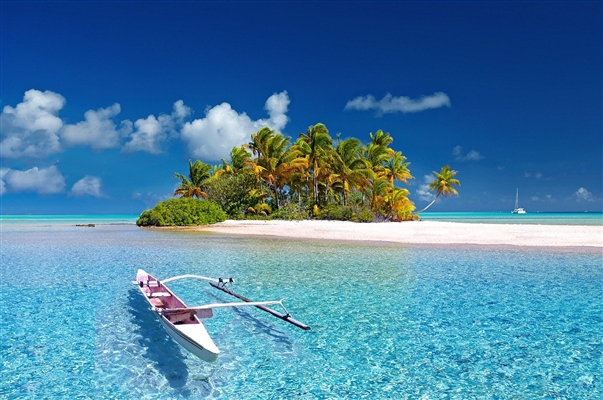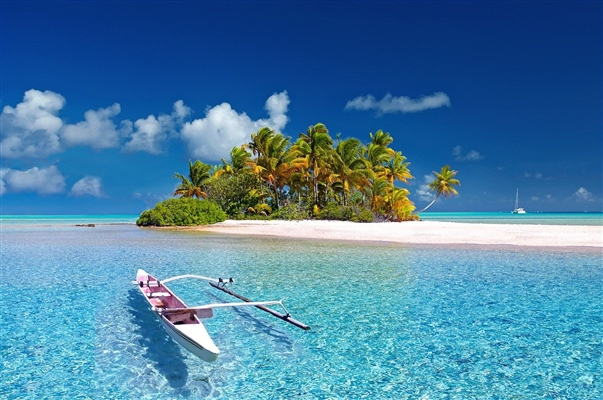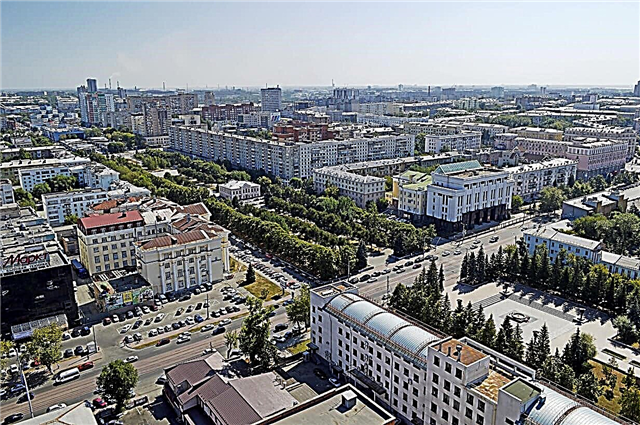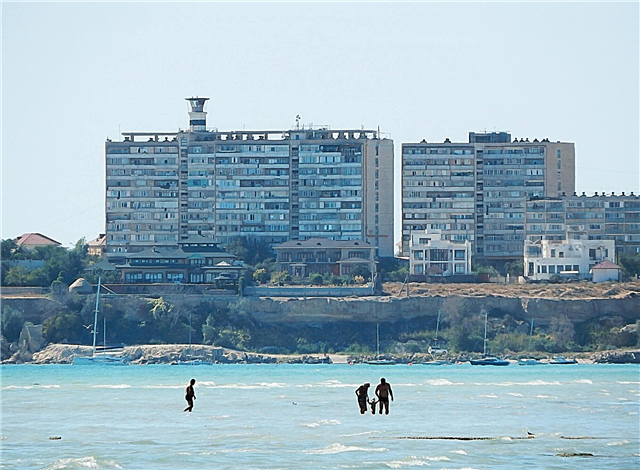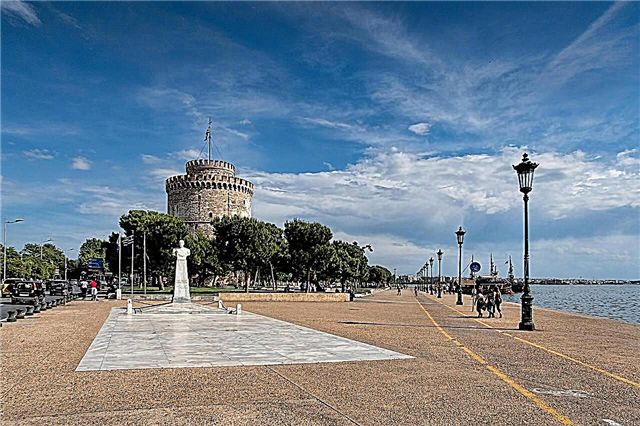The hero city of Volgograd has more than 400 years of history. Despite the rich past, the external features of the city have a rather modern look: wide avenues, spacious squares, modern buildings. The reason for this is the most tragic period in the history of Stalingrad, the defense of the city from Nazi troops. After the liberation, the city was in ruins, it was rebuilt.
Most of the city's monuments are dedicated to the events of the Great Patriotic War. The main memorial complex is Mamayev Kurgan, the site of the most difficult and tragic battles, where thousands of the city's defenders are buried. Every meter of this land is saturated with the blood of the fallen, in every monument there is sorrow and pain of the inhabitants of the city.
Historical and modern monuments of Volgograd
List of popular monuments and sculptures in the city.
"The Motherland Calls!"
A monument that is known not only throughout the country, but also in the world. The height of the sculpture together with the pedestal is 87 meters. The monument represents the figure of a woman who personifies the image of the Motherland, she holds a sword in her right hand high, and with a gesture of her left hand calls on everyone to stand up to fight the enemy. The sculpture is the basis of the architectural ensemble of the memorial complex "Mamayev Kurgan". Installed in 1967.

"Stand to the death"
The sculpture on Mamayev Kurgan, is located on the square "Fought to the death", in the middle of the ascent to the Motherland. The monument is a figure of a Soviet soldier on a pedestal in the form of a rock, it is installed in the middle of a pool filled with water. At the base of the monument there are inscriptions, among them the phrase "To stand to death" - with these words the heroes fought for their land.

"Mother's Sorrow"
Sculpture as part of the Mamaev Kurgan ensemble. Located in the square of sorrow. The height of the composition is 11 meters, it represents the figure of an elderly woman bending over the body of her son who died in the war. The monument was made of reinforced concrete, but it looks like it was hewn out of solid stone. It is installed in the middle of the Lake of Tears, a path made of stones in the water leads to the sculpture.

Pavlov's House
An architectural monument of federal significance, located in Volgograd at st. Sovetskaya, 39. In this house, a group of Soviet fighters held the defensive for 58 days, destroying a large number of Nazis. During the defense of the city, the house was captured by an assault group led by Sergeant Pavlov, hence its name. Today, the ruins of a wall damaged by shells have been preserved, and a memorial plaque has been installed on it. The rest of the house has been completely renovated.

"Defenders of Stalingrad and Red Tsaritsyn"
In the center of the city, on the Square of Fallen Soldiers, there is an obelisk dedicated to those who fell during the defense of Tsaritsyn during the Civil War and the defenders of Stalingrad. Initially, this place was the mass grave of the dead Red Army soldiers. After the liberation of Stalingrad, the bodies of those killed during the defense of the square were buried here. The obelisk is made of granite with a bronze wreath. The eternal flame burns on the mass grave.

Monument to V.I.Lenin
The monument is located on the embankment of the Volgodonsk canal, the figure of Lenin is turned towards the Volga. The monument is recognized as the highest among the monuments erected to people who actually lived. The 27-meter-high reinforced concrete sculpture is installed on a 30-meter pedestal. From the pedestal down stairs lead to the platform, then you can go down to the Volga.

Monument to Mikhail Panikakha
The sculpture depicts the Hero of the Soviet Union at the moment of his last throw on an enemy tank. Mikhail Panikakha was a marine, during the battles for Stalingrad, at the cost of his life, he destroyed a German car, which was a turning point in the battle. The monument is made of copper, the height is over 6 meters. Installed at the place of the death of the hero, on Metallurgov Avenue in the Krasnooktyabrsky district of the city.

Tank T-34
With the beginning of World War II, the Stalingrad Tractor Plant switched to the production and repair of T-34 tanks. One of these combat vehicles is installed on a pedestal in front of the plant. The monument was erected in honor of the labor feat of the collective and in memory of the workers who died in the war. In front of the monument there is a granite obelisk with the inscription "In memory of the heroes of warriors".

Monument to Tank Destroyer Dogs
The sculpture is installed on the Chekistov square. The opening is timed to coincide with the day of the border guard. Dogs participated in the Battle of Stalingrad along with people. A detachment of demolition dogs was formed, which destroyed a large number of Nazis and enemy vehicles. Most of the soldiers of the detachment and their four-legged wards were killed. The figure of the dog is made in full size, on its back it has a special knapsack.

Monument to the sailors of the North Sea
The 8-meter figure of a Marine is made of monolithic reinforced concrete. The monument is located near the Volgograd Elevator. This facility was strategically important during the battles for Stalingrad. A brigade of marines was sent to help the fighters who were on the defensive. In memory of heavy battles, a monument was erected in 1977: a full-length sailor with a weapon in his hand.

Monument to K.K.Rokossovsky
The monument depicts a marshal on horseback, in ceremonial military attire. This is how he was remembered during the command of the Victory Parade in 1945. Konstantin Konstantinovich Rokossovsky was one of the developers of the military operation to destroy Nazi troops at Stalingrad. In honor of him, a monument was erected from grateful residents of the city in 2015. The place on the banks of the Volga is opposite the former location of the military headquarters.

Monument to the founders of Tsaritsyn-Volgograd
The monument opens the beginning of Lenin Avenue in the city center. The sculptural composition represents the full-length figures of two archers, behind them is an obelisk in the form of a fragment of a guard fortress. The city was founded in 1589 as a defensive point of the Volga transport route. The first settlers were 50 archers. The monument was erected for the 400th anniversary of the city, in 1989.

Monument to Prince Zasekin
Prince Grigory Zasekin is considered the founder of Tsaritsyn, the voivode built a fortress, which became the beginning of the city. The sculpture represents the prince on horseback, looking into the distance at the Volga. The total height of the sculpture and the pedestal exceeds 6 meters. The monument was erected in 2009, it is located at the intersection of Lenin Avenue with Port Said Street.

Monument to the heroes of the Komsomol
The sculptural composition consists of the figures of three Komsomol members grieving for their deceased comrade. The monument is dedicated to the feat of young people who fought for the liberation of Stalingrad as part of the Komsomol detachments. The poses and facial expressions of the young heroes convey courage and fortitude, despite deep grief. The monument was opened in 1973 at the intersection of Lenin Avenue and Komsomolskaya Street.

Monument to STZ Militia Fighters
In 1942, militias from the ranks of the tractor plant workers were among the first to fight the German troops. The people's militia was headed by the plant engineer, N. Vychuganov, it was represented by tank brigades and a destroyer battalion. Many died in the fighting. In memory of the heroic deed of the workers in 1983, a monument was erected in the form of three figures forged on a round copper base. It is located on Dzerzhinsky Square.

"Military echelon"
The monument to the railway workers is a restored echelon led by a steam locomotive of the Er series of pre-war construction. The echelon also includes a tank car, a closed car, platforms with a field kitchen and a Katyusha. The railway workers made their contribution to the common cause of the liberation of the city, the echelons supplied the front with equipment and food.The memorial complex is located at the walls of the Battle of Stalingrad Panorama.

Monument to G. Zhukov
The monument was erected in 1996. The opening took place on the 100th anniversary of the birth of Georgy Konstantinovich Zhukov. The monument was erected on the avenue named after the marshal, at the intersection with Khorosheva Street. The sculpture is a half-figure of Zhukov, wearing a military uniform with awards. On the chest of the marshal there are only three Hero stars, as it was at the time of the end of the war. The plaque on the pedestal contains information about the military merits of the marshal, all 4 stars are present here.

Monument to Alexander Nevsky
Prince Alexander Nevsky, according to researchers, was the first to propose to build a guard fortress on the Volga, from which Tsaritsyn was later formed. In 2007, a monument to the Novgorod prince was erected on the Square of the Fallen Fighters. Nearby is the New Experimental Theater. The sculpture represents Alexander Nevsky in full growth, in military attire with a banner in his hands. The monument is made of bronze; together with the pedestal, the height exceeds 7 meters.

Monument to the Siberian Warriors
It was decided to establish a monument dedicated to the feat of Siberians in the Battle of Stalingrad within the framework of cooperation between Volgograd and Novosibirsk. The composition is in the park in front of the Volgograd Agricultural Academy. It is a stone wall in which the figure of a soldier in winter military attire is carved, in his right hand he holds a weapon, and with his left he holds a child sitting on his shoulder.

Monument to V.S.Kholzunov
Viktor Stepanovich Kholzunov was a military pilot, originally from Tsaritsyn. He died during aircraft tests in 1939. In 1940, a bronze monument was erected to him in his hometown on the central embankment, not far from the river port. During the Battle of Stalingrad, only the pedestal of the monument was destroyed; after the war, the sculpture was installed in its original place. The city also has a street named after the famous pilot.

"Cossack glory"
The sculptural composition is located on the central embankment, in Victory Park. The bronze monument was made and installed in 2010 at the expense of the Cossacks. On a granite pedestal there are figures of a Cossack on horseback and his wife, who is accompanying her husband on a military campaign with an icon in her hands. Nearby is the Church of St. John the Baptist, rebuilt on the site of a 16th century church; it is considered a Cossack temple.

Monument to the Heroes of the Defense of Red Tsaritsyn
During the Civil War, Tsaritsyn was a particularly important strategic site. The most difficult battles unfolded here. In memory of the Red Army soldiers who participated in the battles of 1918-1919, a monument was erected on the Metallurgists Square. The height of the composition is about 4 meters, it includes the figures of six workers, frozen at the moment of defending the city with weapons in their hands. The sculptures are on a high granite pedestal, the total height of the monument is more than 8 meters.

Monument to the wars killed in Chechnya
The monument is the central element of the memorial complex in the Dzerzhinsky district of the city, at the intersection of Zhukov Avenue and Kachintsev Street. It was installed in Russia for the first time in memory of those killed in the Chechen war. Initially, the monument was located on the territory of a military unit, later it was moved to a more accessible place. It is a fragment of a rock in which the figure of a soldier with a mournful expression on his face is carved. His gaze is directed downward, to the place where there is a memorial plate with the names of compatriots who died in Chechnya.

Monument to F.E.Dzerzhinsky
The Stalingrad Tractor Plant, as well as the square in front of it, are named after Felix Edmundovich Dzerzhinsky. Here, back in 1935, a bronze sculpture of the famous revolutionary was installed. He is full-length, with his right hand pointing to the plant. After the Battle of Stalingrad, only 4 monuments survived in the city, among them a monument to Dzerzhinsky, it was only necessary to restore the broken arm of the sculpture.

Monument to the Chekists
Dedicated to the soldiers of the 10th division of the NKVD and the militiamen of Stalingrad who fought for the defense of the city in 1942-1943. The fighters of the division were the first to take the enemy's blow. The monument is located on the square of the same name, around which a small park is laid out. The composition represents an obelisk 17 meters high, on top of which there is a bronze figure of a Chekist with a sword in his raised hand.

Monument to Zheglov and Sharapov
In 2015, a new monument was erected on the territory of the Ministry of Internal Affairs for the Volgograd Region. It is dedicated to all employees of the criminal investigation department; the opening took place on the day of a professional holiday. The composition is presented in the form of two bronze figures of the heroes of the film "The Meeting Place Cannot Be Changed", the detectives, as it were, froze in a living pose while discussing work plans, leaning against a lamp post.

Monument to the civilians of Stalingrad
On August 23, 1942, the most terrible massive bombing of Stalingrad began, which lasted almost a week. More than 40 thousand civilians were killed on the first day of the tragedy alone. In memory of those events, on Victory Day 1995, a monument was erected in the form of a 500-kilogram German bomb, frozen over women and children engulfed in flames. It is located on the Volga embankment.

Floating monument to the lost river workers
An unusual monument is erected every spring in the middle of the Volga, opposite Mamayev Kurgan. In this place there was a crossing, along which warships ply with wounded soldiers and military supplies between the left and right banks. The monument is a buoy with a 5-meter anchor. All ships passing by slow down and emit a signal in memory of the dead river workers, throw flowers into the water. In winter, the composition is removed.

Monument to the motorist
In 2012, on the day of the motorist, an unusual monument was unveiled. The sculpture depicts the figure of the famous character of the Golden Calf, Adam Kozlevich. He sits on a car wheel, holding the steering wheel. The creators of the monument, the firm "Arkont", do not exclude the fact that the composition is gradually supplemented with other details of the car. Located on Komsomolskaya street.

Bunny Agnia Barto
In September 2016, a public garden named after Agniya Lvovna Barto was opened in the Komsomolsk Garden of Volgograd. It was named “The Square of Our Childhood”. The centerpiece of this place is the child's favorite character - the abandoned bunny. In sculpture, he does not look sad and lonely. A smiling hare sits on the open book of Barto, on one of the pages is the text of that very poem.



